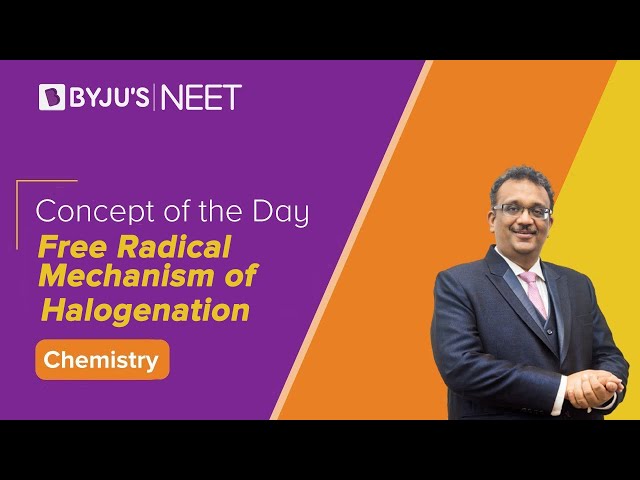Alkyl halides are prepared by the free radical halogenation of alkanes, addition of halogen acids to alkenes, replacement of -OH group of alcohols with halogens using phosphorus halides, thionyl chloride or halogen acids. Aryl halides are prepared by electrophilic substitution to arene. Fluorine and iodides are best prepared by halogen exchange method. These compounds find wide applications in industry as well as in day to day life. These compounds are generally used as solvents and as starting material for the synthesis of a large number of organic compounds.
Download Complete Chapter Notes of Haloalkanes and Haloarenes
Download Now
1. The reaction of tert butyl bromide with sodium methoxide produces mainly
- isobutane
- isobutylene
- tert-butyl methyl ether
- sodium tert butoxide
Answer: (b)
Solution:
When the reaction of tert butyl bromide occurs with sodium methoxide, an elimination takes place. This is the E1cB elimination, wherein the Hoffman alkene is major. Then dehydro halogenation takes place. Subsequently, rather than an ether, which is typically the case, an alkene is obtained. This is why, isobutylene is formed.
2. Which of the following undergoes nucleophilic substitution exclusively by SN1 mechanism?
- Benzyl Chloride
- Ethyl chloride
- Chlorobenzene
- Isopropyl chloride
Answer: (a)
3. The increasing order of nucleophilicity would be?
- Cl– < Br– < I–
- I– < Cl– < Br–
- Br– < Cl– < F–
- I– < Br– < Cl–
Answer: (a)
4. Which of the following is most reactive towards SN1 reaction?
- C6H5C(CH3)C6H5Br
- C8H5CH2Br
- C6H5CH(C6H5)Br
- C6H5CH(CH3)Br
Answer: (a)
5. CH3CH2CH2Br + NaCN → CH3CH2CH2CN + NaBr, will be fastest in
- ethanol
- methanol
- N, N-dimethylformamide
- Water
Answer: (c)
6. A Grignard reagent may be made by reacting magnesium with
- Methyl amine
- Diethyl ether
- Ethyl iodide
- Ethyl alcohol
Answer: (c)
7. C-Cl bond of chlorobenzene in comparison to C-Cl bond in methyl chloride is
- Longer and weaker
- Shorter and weaker
- Shorter and stronger
- Longer and stronger
Answer: (c)
8. A solution of (+) 2-chloro-2-phenylethane in toluene racemises slowly in the presence of a small amount of SbCl5, due to the formation of
- carbanion
- carbene
- free radical
- carbocation
Answer: (d)
9. The decreasing order of boiling points of alkyl halides is
- RF > RCl > RBr > RI
- RBr > RCl > RCl > RF
- RI > RBr > RCl > RF
- RCl > RF > RI > RBr
Answer: (c)
10. Phosgene is commonly known as
- thionyl chloride
- carbonyl chloride
- carbon dioxide and phosphine
- phosphoryl chloride
Answer: (b)
Recommended Video:
Free Radical Mechanism of Halogenation | CHEMISTRY | NEET | Concept of the Day

People also look for:
- NEET Chemistry Syllabus
- NEET Chemistry MCQs
- How to Score 160 Plus in NEET Chemistry
- NEET Chemistry Weightage
- Chemistry Formulas for NEET
- NEET Chemistry Important Topics
Good